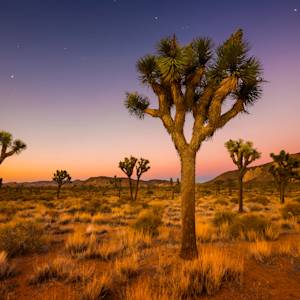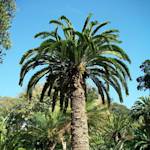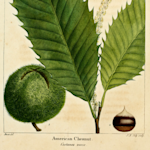Socotra Dragon Tree
2022 CE • Socotra, Yemen
The Socotra Dragon Tree, a striking and ancient species native to the island of Socotra, Yemen, is renowned for its otherworldly appearance and remarkable ability to thrive in harsh arid conditions. "Most trees draw water from the soil and up their roots to the leaves; dragon’s blood trees can also do the reverse, taking water from the air and passing it into the soil. Scientists suggest that the unique shape of the dragon’s blood tree is an adaptation to life in its arid environment, allowing the trees to capture moisture from the fog and clouds, a process called horizontal precipitation capture. Researchers estimate that each dragon’s blood tree can inject several times more water into the soil than the local environment captures as rainfall, providing a critical component of the island’s hydrological system . . . Considered an “umbrella species” . . . the dragon’s blood tree helps support dozens of other plant and animal species, from geckos and snakes to flowering plants . . . Two major factors are driving the dragon’s blood tree to the brink, according to scientists. The climate crisis is one. Socotra’s tropical desert climate has always been extreme but in recent decades, dwindling rainy seasons have caused prolonged and severe droughts, which means less moisture in the soil, leaving saplings struggling to survive. Extreme and unpredictable weather systems, probably fuelled by warming oceans, have brought devastating winds and flooding to Socotra in recent years. In 2015, two cyclones hit the island and in one week wiped out about 30% of Socotra’s trees . . . Most of the dragon’s blood trees in the wild today are probably hundreds of years old, though their exact age is impossible to calculate, because they have no rings in their trunks. But without a younger generation to replace them, the current generation could be the last."
Jess Craig, "Saving the dragon’s blood: how an island refused to let a legendary tree die out," The Guardian, November 12, 2022.
Image: Rod Waddington via Flickr, CC BY-SA 2.0 DEED Attribution-ShareAlike 2.0 Generic


Learn about Maya Lin’s fifth and final memorial: a multi-platform science based artwork that presents an ecological history of our world - past, present, and future.

Discover ecological histories and stories of former abundance, loss, and recovery on the map of memory.

Learn how we can reduce our emissions and protect and restore species and habitats – around the world.

See how art can help us rethink the problems we face, and give us hope that each one of us can make a difference.

Help make a global memorial something personal and close to home. Share your stories of the natural world.


